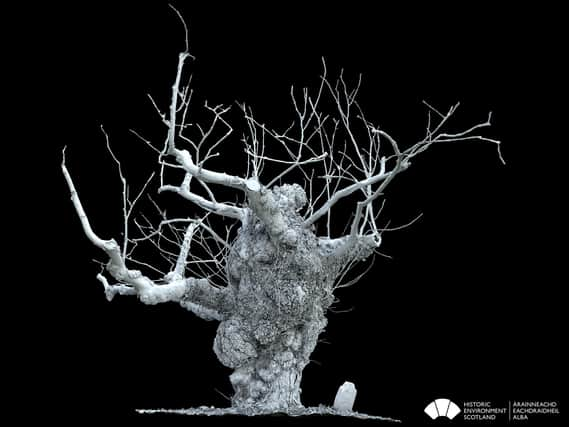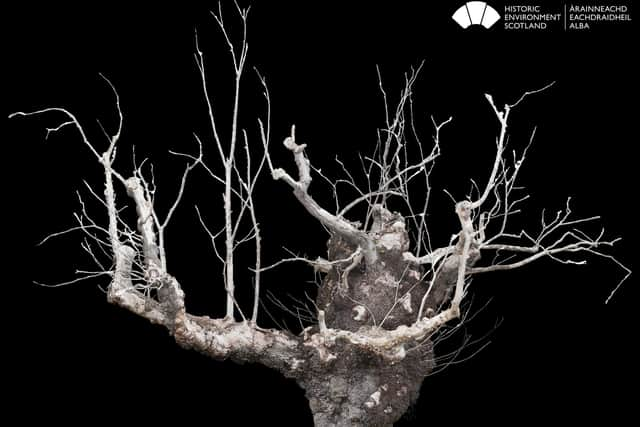800-year-old elm tree in Highlands now diseased and dying


The wych elm at Beauly has succumbed to Dutch Elm Disease with only 5 per cent of the tree now living.
The tree is found in the graveyard at Beauly Priory and first appears in medieval records in 1230.
Advertisement
Hide AdAdvertisement
Hide AdHistoric Environment Scotland carried out laser scanning of the elm as part of a project to chart the country’s ancient trees, with the striking images now showing its widespread decay


Sarah Franklin, a landscape manager at HES, said attempts to find trees as old as the Beauly elm had proved fruitless.
Ms Franklin said: "We couldn't find other elms older in Europe. There is one in Italy 760 years old, but none reaching 800 years old."
She described the Beauly elm as an "amazing tree" which was "gnarly and gothic in appearance".
"It looks like something out of a Hammer horror film," she added.


Ms Franklin said the tree would continue to be managed at Beauly Priory, which was built for monks of the Valliscaulian order, given its historical significance and its continued part in the biodiversity of the area.
Dutch Elm Disease is a fungal infection spread by tiny bark beetles and can rapidly wither and kill healthy trees.
The disease arrived in the south of England in the 1960s and since then it has spread across much of the British mainland, massively reducing the elm population.
Advertisement
Hide AdAdvertisement
Hide AdAccording to Trees for Life, the disease has been moving west through Aberdeenshire and Moray and into the Highlands, but it was hoped that the lower density of elm trees, cooler climate and prevailing winds would slow down its progress.
In 2018, warm weather was blamed for speeding up the spread of the infection in the Inner Moray Firth area of the Highlands.
Wych elm is the only elm regarded as being truly native to the UK, according to the Woodland Trust.
It usually grows in hilly or stoney woodlands, or near streams and ditches and is hardier than it’s English counterpart.
Found across Scotland, it was originally more common in the south east Borders area, where there were once entire forests of wych elm.
Today, it grows naturally as far north as Sutherland and also on Skye, and has been planted in a few places on the Orkney and Shetland Islands.
Its Gaelic name of Liobhann is anglicised as Leven, and gives its name to the two Loch Levens – one in Kinross and the other near Ballachulish in Lochaber.
In folklore, elm trees were long associated with the underworld. It was said the trees had a special affinity with elves who guarded the burial mounds and their dead.
Advertisement
Hide AdAdvertisement
Hide AdIn 2019, a lone elm in Glen Affric, whose remote location has protected it from Dutch elm disease, was named Scotland's Tree of the Year.
The Last "Ent" of Affric is named after the ents in JRR Tolkein's Lord of the Rings, which serve as the guardians of the forest.
